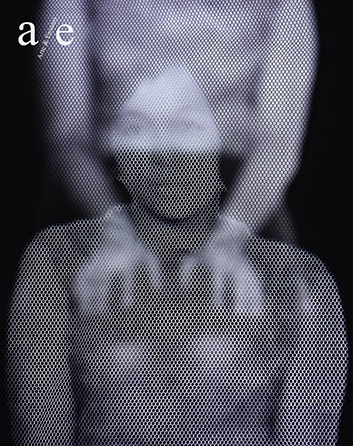Cinema, technicity, and sacredness:
An overview of the shifting boundaries between art, science, and religion
DOI:
https://doi.org/10.60001/ae.n47.11Keywords:
Cinema, Technicity, SacrednessAbstract
Recognizing traces of sacredness in cinema and science, the article explores films and texts that expose the potential for mystical transcendence inherent in art and technique. The philosophies of Bergson and Simondon, some Tarkovsky writings, the metaphysics underlying the work of Isaac Newton and films such as Xapiri, The cave of forgotten dreams, Solaris, Hereafter, The voyage, among others, are the main sources revealing these traces.
References
– UMA ODISSEIA NO ESPAÇO (1968), Stanley Kubrick, EUA.
A CAVERNA DOS SONHOS ESQUECIDOS (2011), Werner Herzog, Canadá/EUA/ França/Reino Unido/ Alemanha.
A INF NCIA DE IVAN (1962), Andrei Tarkovski, Rússia.
A ROTINA TEM SEU ENCANTO (1962), Yasujiro Ozu, Japão.
ALÉM DA VIDA (2010), Clint Eastwood, EUA.
ASAS DO DESEJO (1987), Wim Wenders, Alemanha/França.
ASCENSION (2000), Bill Viola, EUA.
BACURAU (2019), Kleber Mendonça Filho e Juliano Dornelles, Brasil.
BENJAMIN, Walter. A obra de arte na era de sua reprodutibilidade técnica (primeira versão). In: Magia e técnica, arte e política: ensaios sobre literatura e história da cultura. Obras Escolhidas v.1. São Paulo: Brasiliense, 1994.
BERGMAN – 100 ANOS (2018), Jane Magnusson, Suécia.
BERGSON, Henri. Memória e vida. São Paulo: Martins Fontes, 2006.
BERGSON, Henri. As duas fontes da moral e da religião. Rio de Janeiro: Zahar,1978.
BROOKE, John Hedley. Science and religion. Some historical perspectives. New York: Cambridge University Press, 1992.
CABRERA, Júlio. O cinema pensa. Rio de Janeiro: Rocco, 2006.
CHEVALIER, Jacques. Entretiens avec Bergson. Paris: Plon, 1959.
CIDADE DOS SONHOS (2001), David Lynch, EUA.
DANÇANDO NO ESCURO (2000), Lars von Trier, vários países.
DELEUZE, Gilles. A imagem-tempo. 3 ed. São Paulo: Brasiliense, 2005.
DOBBS, Betty Jo Teeter. The foundations of Newton's alchemy. New York: Cambridge University Press, 1984.
ELIADE, Mircea. O sagrado e o profano. A essência das religiões. São Paulo: Martins Fontes, 2010.
ELIADE, Mircea. Ferreiros e alquimistas. Lisboa: Relógio D’água, 1987.
EMERGENCE (2002), Bill Viola, EUA.
EPSTEIN, Jean. Ecrits sur le cinema. 1921-1953. Paris: Seghers, 1974.
FERREIRA. Pedro P. O xamanismo na era de sua reprodutibilidade técnica. doispontos:, Curitiba, São Carlos, v. 16, n. 3, p. 81-98, jul. 2019.
GARCIA DOS SANTOS, Laymert; SENRA, Stella. Xapiri a imagem‑eco do xamanismo. Forumdoc. BH.2012: 16o Festival de Filme Documentário e Etnográfico – Fórum de Antropologia e Cinema. Belo Horizonte: Associação Fundo de Quintal, 2012, p. 161‑167.
HILL, Geoffrey. Illuminating shadows. The mythic power of film. Boulder: Shambala, 1992.
HIROSHIMA MEU AMOR (1959), Alain Resnais, França/Japão
I DON’T KNOW WHAT IT IS I AM LIKE (1986), Bill Viola, EUA.
IRIGARAY, Luce. Speculum de l´autre femme. Paris: Minuit, 1974.
KIDEL, Mark. Earth, wind and fire. The Guardian, London, 19 mar. 2002. Disponível em: https://www.theguardian.com/culture/2002/mar/19/artsfeatures.culturaltrips. Acesso em 23 set. 2022.
KOPENAWA, Davi. Depoimento recolhido em 1998 na aldeia onde vive. Trad. e ed. Bruce Albert. Disponível em: https://pib.socioambiental.org/pt/c/no-brasil-atual/narrativas-indigenas/narrativa-yanomami. Acesso em 14 jun. 2022.
MACHADO, Arlindo. Pré-cinema e pós-cinema. Campinas: Papirus, 2013.
MORIN, Edgar. O cinema ou O homem imaginário. São Paulo: Realizações Editora, 2014.
NEWTON, Isaac. Princípios matemáticos de filosofia natural. São Paulo: Edusp, 2012.
NIETZSCHE. Friedrich. Além do bem e do mal. São Paulo: Companhia de Bolso, 2005.
NISHITANI, Keiji. Religion and nothingness. Berkley: University of California Press, 1982.
NOSTALGIA (1983), Andrei Tarkovski, Itália.
O ESPELHO (1975), Andrei Tarkovski, URSS.
O SACRIFÍCIO (1986), Andrei Tarkovski, França/Inglaterra/Suécia.
O SÉTIMO SELO (1957), Ingmar Bergman, Suécia.
OS IMPERDOÁVEIS (1992), Clint Eastwood, EUA.
PRIGOGINE, Ilya; STENGERS, Isabella. A nova aliança. Brasília: Editora UnB, 1984.
RETRATOS FANTASMAS (2023), Kleber Mendonça Filho, Brasil.
SANTOS, Laymert G. Politizar as novas tecnologias. São Paulo: Editora 34, 2003.
SCHRADER, Paul. Transcendental style in film: Ozu, Bresson, Dreyer. Berkeley: University of California Press, 1972.
SHAH, Idries. Histórias dos dervixes. 2 ed. Rio de Janeiro: Nova Fronteira,1976.
SIMONDON, Gilbert. Sur la technique. Paris: PUF, 2013.
SIMONDON, Gilbert. Du mode d’existence des objets techniques. Paris: Aubier-Montaigne, 2008.
SOLARIS (1972), Andrei Tarkovsky, URSS.
STALKER (1979), Andrei Tarkovski, URSS e Alemanha Ocidental.
TÃO LONGE, TÃO PERTO (1993), Wim Wenders, Alemanha/França.
TARKOVSKI, Andrei. Esculpir o tempo. São Paulo: Martins Fontes, 1990.
THE REFLECTING POOL (1979), Bill Viola, EUA.
THE VOYAGE (2002), Bill Viola, EUA.
TRISTAN’S ASCENSION (2005), Bill Viola, EUA.
TURETZKY, Philip. Time. London: Routledge, 1998.
UM AMERICANO EM PARIS (1951), Vincente Minnelli, EUA.
UM CORPO QUE CAI (1958), Alfred Hitchcock, EUA.
VIOLA, Bill. Reasons for knocking at an empty house: writings 1973-1994. London: Thames and Houdson/Antony d´Offay Galery, 1995.
VIRILIO, Paul. A bomba informática. São Paulo: Estação Liberdade, 1999.
XAPIRI (2012), Bruce Albert, Gisela Motta, Laymert dos Santos, Leandro Lima e Stella Senra, Brasil.
ZERNIK, Clélia. L’oeil et l’objet. Paris: Vrin, 2012.
ZIZEK, Slavoj. Tout ce que vous avez toujours voulu savoir sur Lacan sans jamais oser le demander a Hitchcock. Paris: Navarian, 1988.
Downloads
Published
Issue
Section
License
Copyright (c) 2024 Arte & Ensaios

This work is licensed under a Creative Commons Attribution 4.0 International License.
Autores que publicam nesta revista concordam com os seguintes termos:- Autores mantém os direitos autorais e concedem à revista o direito de primeira publicação, com o trabalho simultaneamente licenciado sob a Licença Creative Commons Attribution que permite o compartilhamento do trabalho com reconhecimento da autoria e publicação inicial nesta revista.
- Autores têm autorização para assumir contratos adicionais separadamente, para distribuição não-exclusiva da versão do trabalho publicada nesta revista (ex.: publicar em repositório institucional ou como capítulo de livro), com reconhecimento de autoria e publicação inicial nesta revista.
- Autores têm permissão e são estimulados a publicar e distribuir seu trabalho online (ex.: em repositórios institucionais ou na sua página pessoal) a qualquer ponto antes ou durante o processo editorial, já que isso pode gerar alterações produtivas, bem como aumentar o impacto e a citação do trabalho publicado (Veja O Efeito do Acesso Livre).


